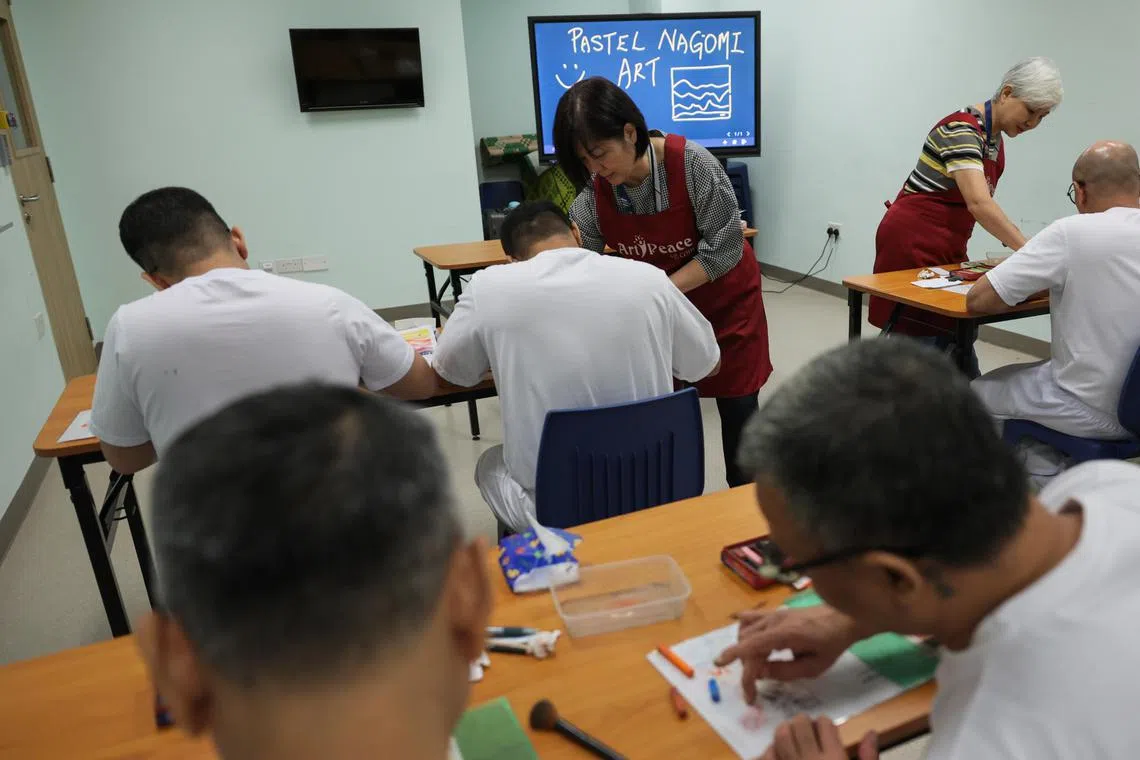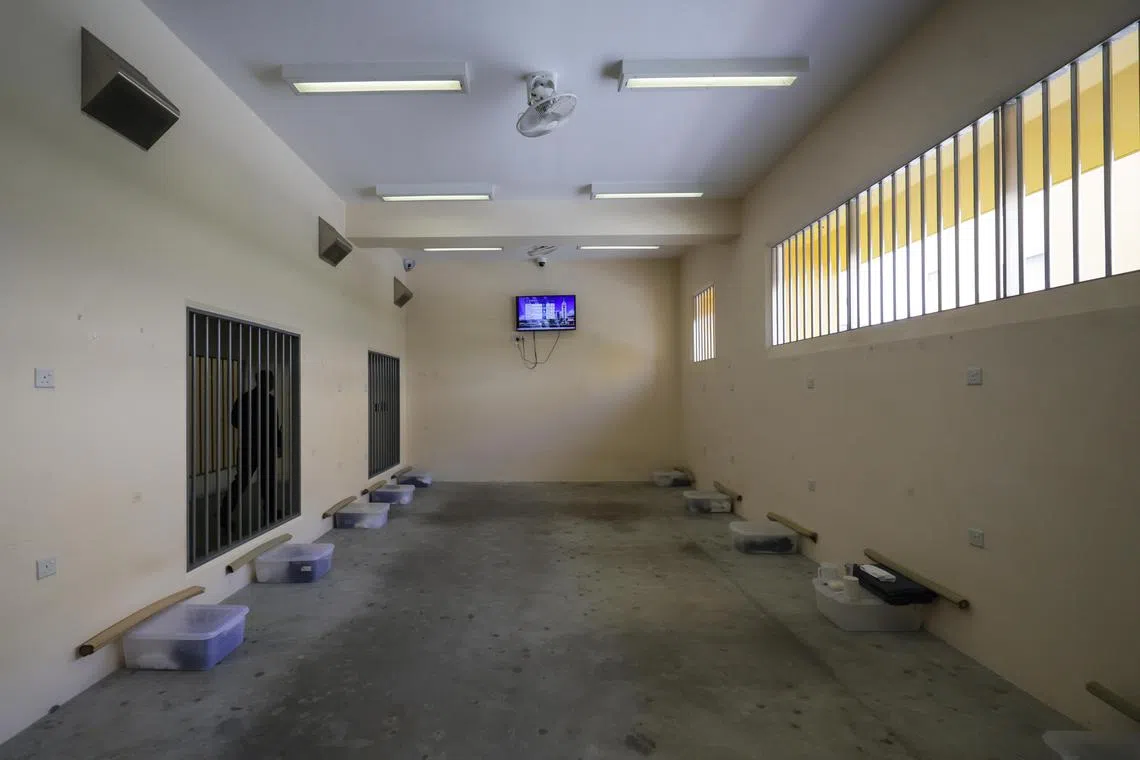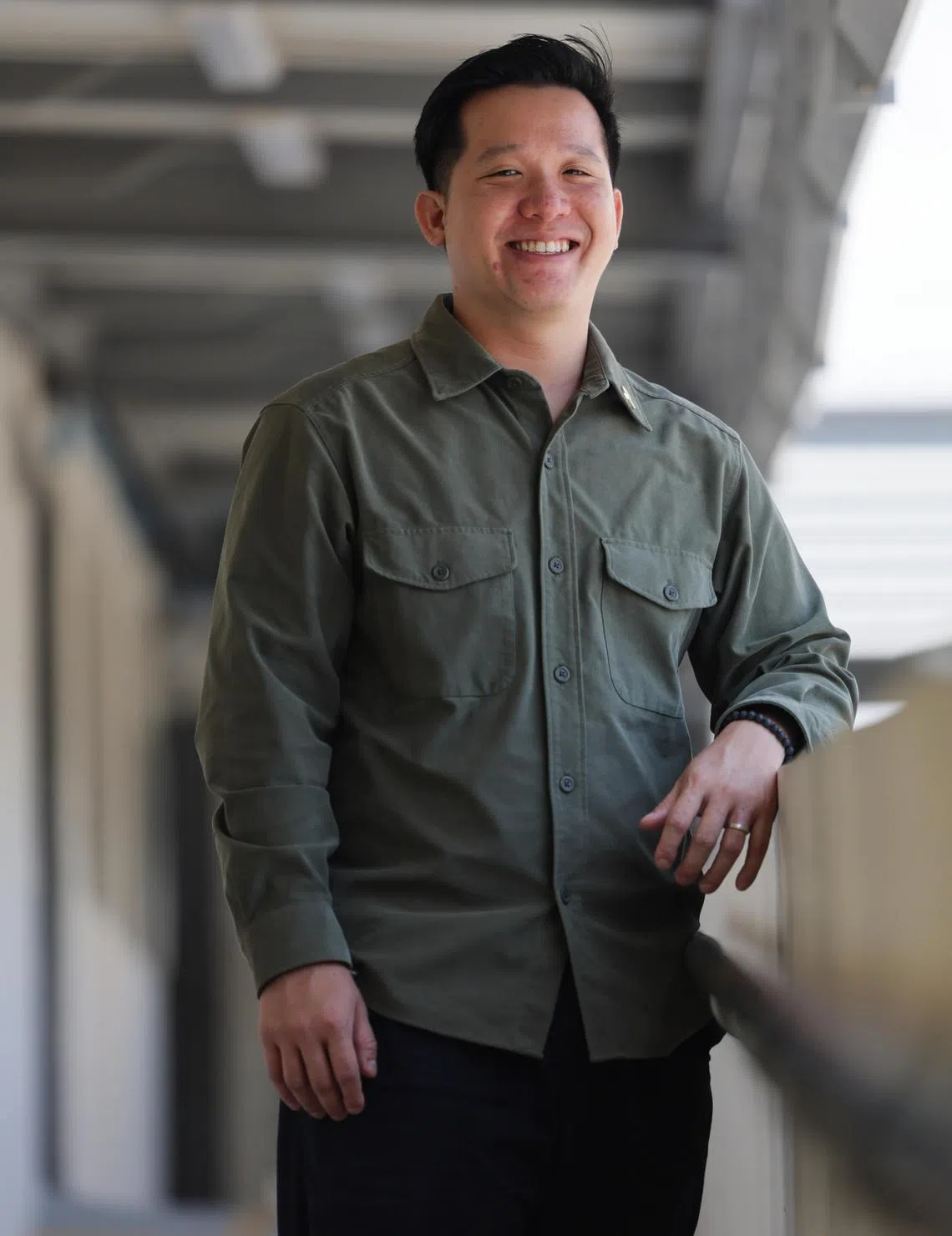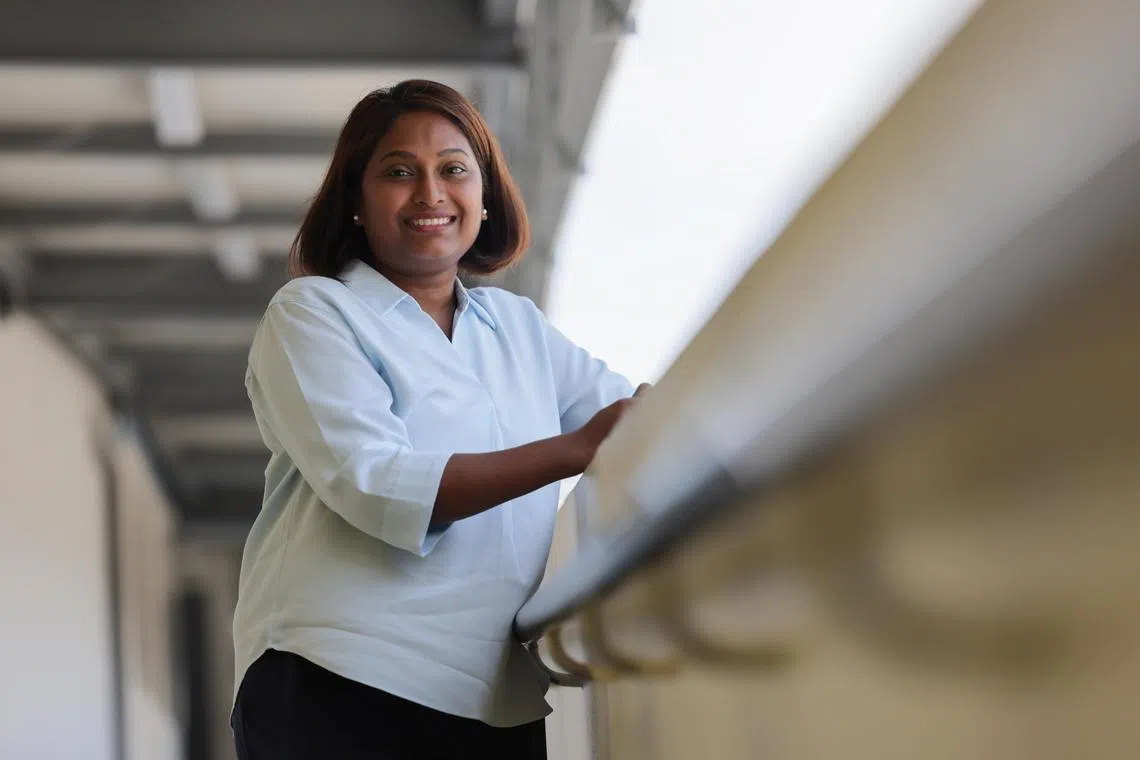Two-year recidivism rate for drug inmates highest since 2015
Sign up now: Get ST's newsletters delivered to your inbox

Inmates taking part in a Nagomi art programme, which involves painting with one’s fingers and pastel powder, at the reintegration hub at Institution S2.
ST PHOTO: GIN TAY
Follow topic:
SINGAPORE - The recidivism rate of local inmates in the various drug rehabilitation centres (DRCs) within two years of release is the highest it has been since 2015.
According to statistics released by the Singapore Prison Service (SPS) on Feb 11, the two-year recidivism rate for DRC inmates from the 2022 release cohort is at 30.8 per cent.
This is higher than the overall rate of 21.3 per cent, which includes all local inmates who were detained, sentenced to jail, or given a day reporting order within two years of their release.
SPS said the overall two-year recidivism rate, which went down from 22 per cent the previous year, remained low and stable.
The statistics show that the overall five-year recidivism rate is on a downward trend, dropping to 36.6 per cent for the 2019 cohort from 36.8 per cent the previous year, while the five-year figure for DRC inmates went down to 43 per cent from 43.6 per cent the previous year.
But the DRC two-year figure has gone up for the third straight year and is the highest it has been since 2015, when the recidivism rate for the 2013 release cohort was 31.9 per cent.
The SPS statistics also show that the number of overall drug rehabilitation inmates is the highest it has been since 2008, when SPS statistics were first made public.
As at Dec 31, 2024, there were 4,349 such inmates, comprising those at the two DRCs at Changi Prison Complex’s B5 institution and Selarang Park Complex, and female DRC inmates at Institution A4. There were 3,981 DRC inmates in these facilities in 2023.
In a statement on the annual statistics, SPS cited its 2021 study that found repeat drug abusers typically had weak social support and faced challenges in building a strong support network after their discharge from the DRC into the community.
SPS added that the recidivism rate for those who have committed drug offences previously is also about three times higher than for those who have not.
“Therefore, it is crucial to increase the social and community capital of drug abusers within a throughcare ecosystem to support their successful rehabilitation and reintegration,” SPS said.
To improve its rehabilitation and reintegration programmes, SPS said it will continue to enhance the effectiveness of its psychology-based correctional programme for repeat drug abusers.
This is to help them fight the urge to relapse, and connect them to appropriate community resources.
For example, SPS said it will involve former drug abusers to share their strategies for successful recovery as part of its programme.
It also set up a reintegration hub in September 2024 at Institution S2, which is part of the Selarang Park Complex, to better help prepare inmates who are about to serve the tail end of their sentences in the community.
This could be at home or at halfway houses, and inmates involved include those about to embark on a scheme that allows them to leave prison daily for work, studies or skills training.
Speaking to The Straits Times on Feb 11 at a media briefing on the annual statistics, Superintendent of Prisons Mohamed Nizaar Md Ibrahim, senior assistant director of community corrections (halfway house/home detention), said that before the hub, the reintegration process was done at the various clusters where the inmates resided.
He said the purpose of the hub is to centralise resources in a “one-stop facility” for a more targeted approach preparing the inmates to rejoin the community, and get partners and volunteers involved.
At the hub – which the media visited on Feb 11 – inmates stay in dormitories that are more spacious, rather than in cells. They can also watch TV.

A cell that houses inmates in a dormitory setting at Institution S2, which is part of the Selarang Park Complex.
ST PHOTO: GIN TAY
Inmates also have access to computers, allowing them to change their Singpass details to give them access to their Central Provident Fund and Housing and Development Board accounts.
Mr Bryan How, 35, a senior career coach with Yellow Ribbon Singapore, works with inmates at the hub before they rejoin the workforce. This includes addressing their concerns about tackling discrimination at the workplace, in a group setting of up to 12 inmates.
He said: “Hopefully, it creates an environment where they can learn from each other.”

Mr Bryan How, a senior career coach with Yellow Ribbon Singapore, works with inmates at the hub before they rejoin the workforce.
ST PHOTO: GIN TAY
Ms Premala Mariappan, 32, a correctional rehabilitation specialist who works with supervisees on community-based programmes, said having a job provides former inmates with a sense of purpose and motivation.
However, she said they face multiple challenges in navigating the working world, including understanding the demands of the job.
She said: “Especially when they have been incarcerated for some time, the same job they may have done many years ago will slightly differ now, especially with digitalisation.”

Ms Premala Mariappan, a correctional rehabilitation specialist who works with supervisees on community-based programmes, said having a job provides former inmates with a sense of purpose and motivation.
ST PHOTO: GIN TAY
At the hub, inmates also take part in a Nagomi art programme, which involves painting with one’s fingers and pastel powder.
John (not his real name), 41, who is on his ninth stint behind bars, mostly for drug offences, shared with the media some of the challenges of rejoining the community after prison.
In 2014, he was released from prison after about four years – his longest stint behind bars – and he recalls having felt lost and needing to get used to the idea of smartphones and ride-hailing apps.
He said: “My sister told me that nowadays, people used touchscreen phones and that they use Wi-Fi. I asked her ‘What is Wi-Fi?’”
John, who was arrested for drug offences just two weeks after he was married in 2023, said he will be giving his Nagomi painting to his wife.
He said: “She is giving me a last chance. She has told me to focus on managing my life and staying clean.”


